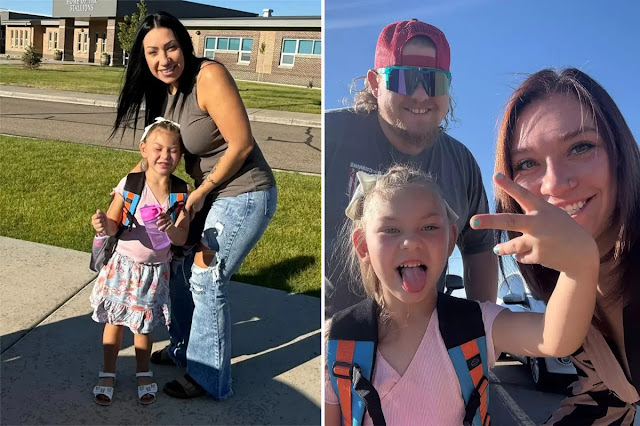In a poignant and deeply personal revelation, the family of Hollywood icon Bruce Willis has shared an intimate look into their lives following his diagnosis with frontotemporal dementia (FTD). The 70-year-old actor, celebrated for his roles in blockbuster films like Die Hard, Pulp Fiction, and The Sixth Sense, has transitioned to living with round-the-clock caregivers in a second home near his wife, Emma Heming Willis, and their two young daughters. This arrangement, designed to prioritize Willis’ safety and comfort while allowing his family to remain closely connected, reflects the profound challenges and unwavering love that define their new normal. Emma Heming Willis, 49, has documented her experiences as a caregiver in her forthcoming book, The Unexpected Journey, set for release on September 9, 2025. In an emotional ABC News special of the same name, she spoke candidly with Diane Sawyer about the family’s efforts to adapt to Willis’ condition while preserving the warmth, love, and connection that have always defined their bond.
A New Home for Bruce Willis
Following his FTD diagnosis, Bruce Willis now resides in a one-story home carefully selected for its accessibility and safety. Located near the primary residence of Emma Heming Willis and their daughters, Mabel, 13, and Evelyn, 11, this second home is designed to accommodate Willis’ needs as his condition progresses. Frontotemporal dementia, a rare and aggressive form of dementia, affects the frontal and temporal lobes of the brain, leading to changes in behavior, personality, and communication abilities. For Willis, whose career was built on his charisma, quick wit, and commanding presence, the disease has fundamentally altered his ability to engage with the world as he once did.
The decision to move Willis to a separate residence was not made lightly. Emma Heming Willis described it as “one of the hardest decisions I’ve had to make so far,” a choice driven by her commitment to balancing her husband’s care with the needs of their young daughters. “I knew, first and foremost, Bruce would want that for our daughters,” she told Sawyer. “He would want them to be in a home that was more tailored to their needs, not his needs.” The one-story layout of the second home ensures that Willis and his caregivers can navigate the space safely, reducing the risks associated with mobility challenges that often accompany FTD.
Despite the physical separation, the second home is far from isolated. Emma and her daughters visit frequently, often starting their day with breakfast together and returning in the evenings. The residence is filled with personal touches that reflect the family’s presence—items belonging to Mabel and Evelyn create a sense of familiarity and continuity. “It is … a house that is filled with warmth and love and care and laughter,” Emma said, her voice tinged with both sorrow and gratitude. The home has become a gathering place for Willis’ extended family, including his ex-wife, Demi Moore, and their three adult daughters, Rumer, Scout, and Tallulah, who can easily visit and spend time with him.
The involvement of Willis’ blended family underscores the strength of their bond. Moore, who was married to Willis from 1987 to 2000, has remained a steadfast presence in his life, and their daughters have rallied around their father. Friends, too, continue to show up, bringing “life and fun” to the home. This outpouring of support has been a source of comfort for Emma, who finds solace in seeing Willis surrounded by those who care for him. “It’s been beautiful to see that, to see how many of Bruce’s friends continue to show up for it,” she said, highlighting the community that has formed around the actor in his time of need.
The Diagnosis and Its Impact
The journey to Willis’ current reality began in early 2022, when his family announced that he would retire from acting due to a diagnosis of aphasia, a condition that impairs a person’s ability to communicate. Aphasia can manifest in difficulties with speaking, understanding language, reading, or writing, and for an actor whose livelihood depended on delivering lines with precision and emotion, the diagnosis was devastating. The announcement marked the end of a storied career that spanned four decades and included iconic roles that made Willis a household name.
Just over a year later, in February 2023, the family shared a more specific and sobering update: Willis had been diagnosed with frontotemporal dementia, a condition that explained the progression of his symptoms. FTD is distinct from other forms of dementia, such as Alzheimer’s, in that it primarily affects behavior and personality rather than memory in its early stages. For Willis, the disease brought about an “alarming” shift in his demeanor, as Emma recalled. “I didn’t understand what was happening,” she told Sawyer. “And I just thought like, ‘How can I remain in a marriage that doesn’t feel like what we had? It doesn’t feel like a marriage anymore.’”
Before the diagnosis, Emma struggled to make sense of the changes in her husband. Willis, once known for his sharp humor and commanding presence, began to withdraw, dismissing her concerns when she tried to address them. “I did have these conversations with Bruce, like, ‘What is happening? Is everything OK? Are you OK?’ … He would dismiss it,” she recounted. The uncertainty took a toll on their relationship, leaving Emma grappling with feelings of confusion and isolation. It was only after medical evaluations confirmed the FTD diagnosis that the pieces began to fall into place, providing clarity but also confronting the family with the reality of an incurable and progressive disease.
FTD has no cure, and its progression varies from person to person. For Willis, the disease has led to significant communication challenges and changes in behavior, though there are still “moments” when his former self shines through. “When we are with him, he lights up,” Emma said, describing the fleeting but precious instances when Willis’ personality breaks through the fog of his condition. These moments, though rare, are a lifeline for the family, offering glimpses of the man they know and love. Yet, Emma admitted that dwelling on who Willis once was can be painful. “Sometimes it’s just easier for me to stay in the what is,” she said. “It’s hard to look back.”
A Caregiver’s Journey
Emma Heming Willis’ role as a caregiver has been both a profound challenge and a testament to her resilience. In The Unexpected Journey, she chronicles the emotional and practical complexities of caring for a loved one with FTD. The book, set to be released on September 9, 2025, offers an unflinching look at the realities of the disease, from its impact on family dynamics to the daily demands of caregiving. Emma’s decision to share her story publicly reflects her desire to raise awareness about FTD, a condition that remains poorly understood compared to other forms of dementia.
Caring for Willis requires a delicate balance of meeting his needs while maintaining a sense of normalcy for their daughters. Mabel and Evelyn, still in their early teens, are navigating the complexities of their father’s illness at a young age. Emma has prioritized creating a stable and loving environment for them, ensuring that they can continue to build memories with their father. The second home serves as a space where the girls can spend time with Willis without the constant presence of medical equipment or the stress of caregiving responsibilities overshadowing their interactions.
Emma’s approach to caregiving is grounded in acceptance and connection. “I don’t need him to know that I am his wife, we were married on this day… I don’t need any of that,” she told Sawyer. “I just want to feel that I have a connection with him, and I do.” This perspective reflects her ability to find meaning in the present, even as the disease reshapes her relationship with her husband. By focusing on the moments of joy and connection—whether it’s a shared laugh or a spark of recognition in Willis’ eyes—Emma has found a way to navigate the grief and uncertainty that accompany FTD.
The Blended Family’s Strength
The Willis family’s story is one of unity in the face of adversity. Bruce Willis’ blended family—encompassing Emma, their daughters, Demi Moore, and their three adult daughters—has come together to support him. Moore, who has maintained a close relationship with Willis since their divorce, has been a vocal advocate for raising awareness about his condition. Their daughters, Rumer, Scout, and Tallulah, have also played an active role, sharing tributes to their father on social media and speaking publicly about the impact of his diagnosis.
This unity is particularly evident in the way the family has rallied around the second home. The residence is not just a place for Willis to receive care but a space where his loved ones can gather, share memories, and maintain their connection with him. The involvement of friends, many of whom have known Willis for decades, adds another layer of support. Their visits bring laughter and life to the home, creating an environment that feels less like a care facility and more like an extension of the family’s love.
For Mabel and Evelyn, the second home offers a way to stay connected to their father while shielding them from the more challenging aspects of his care. Emma has been deliberate in ensuring that her daughters’ childhoods are not defined solely by their father’s illness. By maintaining a separate primary residence, she has created a space where the girls can focus on school, friends, and their own growth, while still spending meaningful time with Willis.
Raising Awareness and Finding Purpose
Emma Heming Willis’ decision to write The Unexpected Journey and participate in the ABC News special reflects her commitment to turning personal pain into a broader mission. Frontotemporal dementia affects an estimated 50,000 to 60,000 people in the United States, but it remains underdiagnosed and misunderstood. By sharing her family’s story, Emma hopes to shine a light on the challenges faced by those living with FTD and their caregivers, while also fostering a sense of community for others navigating similar journeys.
The book is not just a memoir but a resource for families grappling with the realities of dementia. It offers insights into the emotional, logistical, and financial challenges of caregiving, as well as strategies for maintaining hope and connection. Emma’s candor about her struggles—particularly the early days when she questioned the future of her marriage—resonates with caregivers who often feel isolated in their experiences. Her willingness to share these vulnerabilities has already sparked conversations about the need for greater support for families affected by FTD.
The ABC News special, featuring Emma’s interview with Diane Sawyer, amplifies this message to a broader audience. The program, titled The Unexpected Journey, provides an intimate look at the Willis family’s life, blending personal anecdotes with broader discussions about FTD. For Emma, participating in the special was an opportunity to honor her husband’s legacy while advocating for those who lack the platform to share their stories. “Bruce’s legacy is so much bigger than his films,” she said. “It’s about the love he’s given us, the love we give him, and the way we come together as a family.”
A Legacy of Love and Resilience
Bruce Willis’ career as an actor made him a global icon, but it is his family’s response to his illness that may ultimately define his legacy. The love and dedication shown by Emma, their daughters, Demi Moore, and their extended family reflect the strength of their bond and their commitment to ensuring Willis’ dignity and comfort. The second home, filled with warmth and laughter, is a testament to their efforts to create a space where Willis can feel loved and supported, even as FTD reshapes his reality.
For Emma, the journey has been one of profound loss but also of rediscovery. By focusing on the present and finding joy in small moments, she has forged a new kind of connection with her husband. “When we are with him, he lights up,” she said, a reminder that love transcends the limitations imposed by illness. The Willis family’s story is a powerful reminder that even in the face of a devastating diagnosis, there is room for hope, resilience, and the enduring power of family.
As The Unexpected Journey prepares to hit shelves and the ABC News special reaches viewers, the Willis family’s story is poised to inspire countless others. It is a story of a man whose larger-than-life presence on screen has been matched by the quiet strength of his loved ones off screen. For Bruce Willis, Emma Heming Willis, and their daughters, the journey ahead is uncertain, but it is one they face together, with love as their guide.
Conclusion
The Willis family’s experience with frontotemporal dementia is a deeply human story of love, loss, and adaptation. Bruce Willis, once a towering figure in Hollywood, now lives a quieter life, surrounded by caregivers and loved ones in a home designed for his safety. Emma Heming Willis’ decision to share their story through her book and the ABC News special reflects her determination to find meaning in their challenges and advocate for others facing similar struggles. The second home, a space filled with warmth and connection, stands as a symbol of the family’s resilience and their unwavering commitment to one another.
As the world continues to learn about FTD and its impact, the Willis family’s openness offers hope and solidarity to those navigating the complexities of dementia. Their story is a testament to the power of love to endure, even in the face of profound change, and a reminder that every family’s journey is unique, yet universally relatable. For Bruce Willis and his loved ones, the path forward is paved with challenges, but it is also illuminated by the light of their shared love and unbreakable bond.








